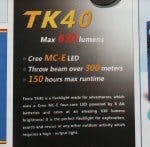The Advertising Standards Authority in the UK has upheld complaints that advertisements for Samsung’s LED-backlit LCD televisions, in which the company uses the phrase “LED TV”, are misleading.
In its adjudication, the ASA stated that “We considered that the ad implied the TV displays were comprised totally of LEDs similar to some outdoor displays when that was not the case. We considered that because the ads were ambiguous and did not make clear how the TVs utilised the LED technology, the ads were likely to mislead.”
The ASA has ruled that the ads must not appear again in the UK market in their current form. Samsung has been told to ensure that future marketing communications describe the technology their products use accurately.
LEDs Magazine highlighted this situation in its July/August issue. The Commentary section (p4) discusses Samsung’s ad campaign, saying, “The term ‘LED TV’ is a little controversial, and in the UK it is being looked at by the Advertising Standards Authority. Of course, Samsung doesn’t actually make LED TVs, and is in fact talking about its new LCD TVs with LED backlights.”
LED TV: What’s in a name?
Elsewhere in our July/August issue, we discussed the situation in more detail:
You can of course make an LED TV, in which the viewer looks directly at the individual LED pixels. Giant versions are seen at sports stadia around the world, with the Dallas Cowboys’ new center-hung display being the latest and greatest. But there are limitations on how close you can place the individual LED pixels. If the viewer is too close, the pixels can be easily resolved. Not much good for a TV in your living room.
Samsung’s use of “LED TV” is problematic, however, because of the confusion that will arise when OLED TVs become more prominent in the marketplace. OLED is separate display technology from LCD or plasma. And guess who is at the forefront of OLED TV development? None other than Sony, Samsung’s fiercest rival.”
Quoting from our July/August Commentary section:
“Many people in the LED industry often find themselves trying to explain to “the man on the street” what LEDs are all about, and may resort to examples with which people are familiar, such as traffic signals, or car brake lights, or flashlights. In consumer products, the use of LED technology is now being widely used on marketing material, and I have even seen an ad for a flashlight,
As shown in the images, the flashlight ad refers to the Cree MC-E LED. If you’ve seen any other ads for consumer products that mention the LED maker, please tell us.
Greenpeace ad for energy-efficient light-bulbs
Talking of ads, here's a fun one from Greenpeace, promoting energy-efficient lighting (not LED-specific, although some of these things would be easier done with LEDs).
Please do not watch if easily offended.









